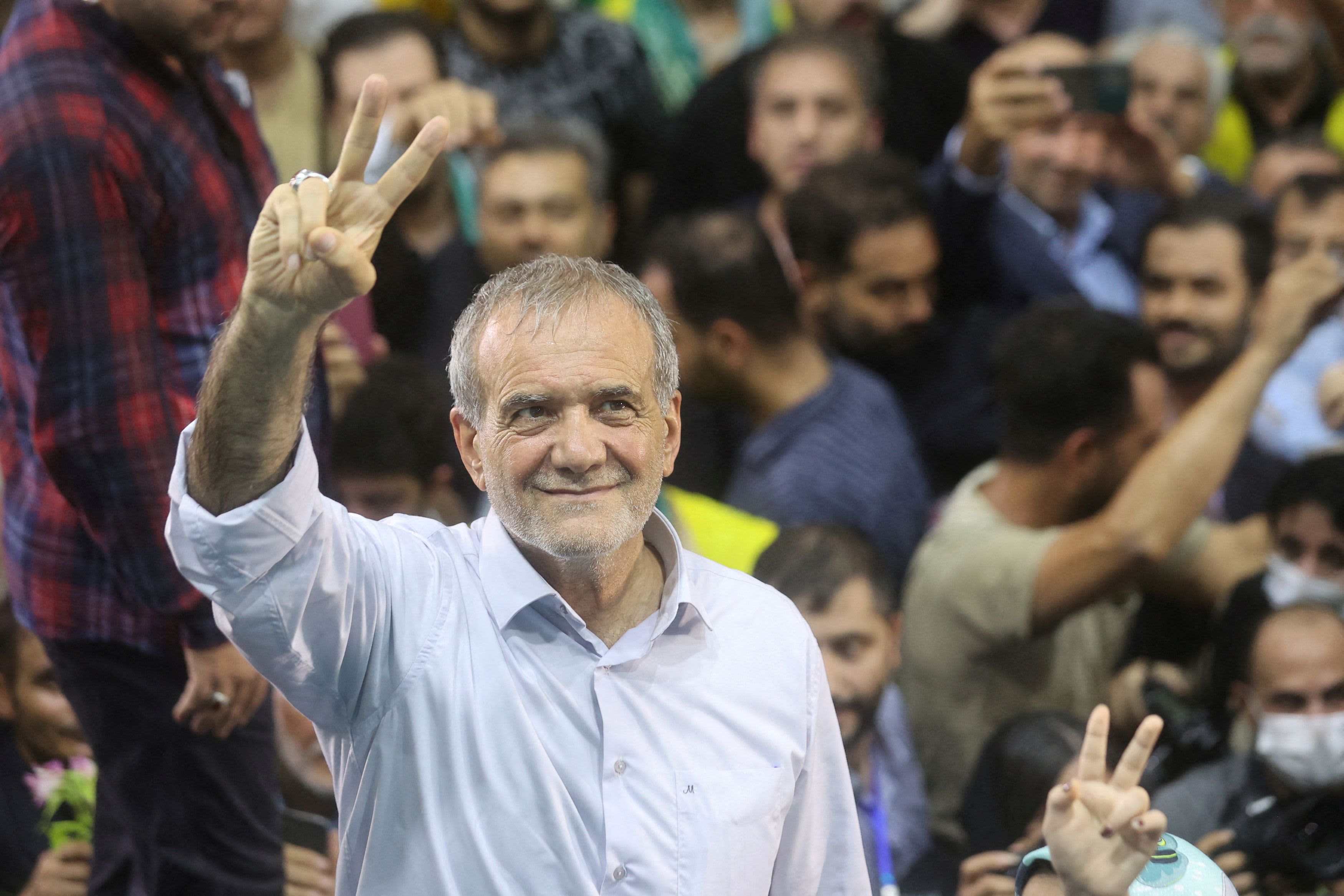
Iran elected Masoud Pezeshkian to its presidency, in an unexpected victory for the country’s reformist camp amid deep social discontent, economic hardship, and regional war.
Pezeshkian won 16.3 million votes, according to reports which cited the local authorities, with the election seeing a 49.8% turnout. His rival Saeed Jalili, a hard-line right-wing former nuclear negotiator, finished the race with 13.5 million votes.
The 69-year-old Pezeshkian managed to defeat several other candidates, all of whom were stanchly conservative, even as many analysts described him as the “token reformist” and a “second-tier candidate” in the contender pool with little name recognition.
The most moderate of the candidates, he formerly served as minister of health under Iran’s last reformist president, Mohammad Khatami, from 1997 to 2005, and Khatami among other reformist politicians endorsed him.
Pezeshkian has also been a member of parliament since 2008, and is a member of the Islamic Consultative Assembly and the vice speaker of parliament. He wants to loosen social restrictions like Iran’s strict hijab law and improve relations with the West, including potentially restarting nuclear talks with world powers.
Pezeshkian will serve for four years as the head of government for the Islamic Republic, and faces no shortage of challenges. The country of 88 million has for years endured a battered economy, harsh crackdowns on dissent, high inflation, and heavy Western sanctions. It also faces mounting tensions with the U.S. over Tehran’s ramped-up Iranian nuclear enrichment and the Israel-Hamas war.
Fundamental changes unlikely?
The new Iranian president will have to contend with whoever takes the White House in November. This raises the stakes for both Tehran and Washington, as well as the Middle East writ large, as Iran comes closer than ever to nuclear bomb-production capability and continues to back proxy groups fighting Israel.
On issues of foreign policy and war, the Iranian president wields some influence and is the country’s public-facing messenger. But power and critical decision-making in Iran ultimately lies with the supreme leader, Ayatollah Khamenei, and unelected institutions like the Revolutionary Guards.
“While the election could lead to shifts in the priorities, tone and tactics of Iran’s domestic and foreign policies, a fundamental change in the status quo is unlikely,” Sina Toossi, a senior non-resident fellow at the Center for International Policy, told CNBC.
“The core principles guiding Iran’s strategic decisions, particularly concerning the U.S. and Israel, are firmly rooted in the broader framework set by the Supreme Leader and influential bodies like the Revolutionary Guard,” he said.
Pezeshkian’s victory “could open avenues for renewed diplomatic engagements and slightly more progressive domestic policies. However,” Toossi said, “even with a reformist president, the extent of change would be limited by the overarching power structures and strategic imperatives that define Iran’s political landscape. Thus, any real change would likely be gradual and incremental rather than transformative.”
Iran’s election was held following the unexpected death of former President Ebrahim Raisi in a helicopter crash in May.
Iran’s elections are not considered to be free or fair, as the country’s ultra-conservative Guardian Council ultimately decides who is allowed to run on the ballot in the first place. Voting was open to roughly 61 million eligible Iranians, but many pledged to boycott, pointing out the lack of genuine choice for voters.
The council only approved six candidates to run for the presidency for this election out of a list of 80 registrants, and all the female registrants were disqualified. Of the six candidates approved, five were hard-line conservatives and three had been sanctioned by Western governments.
Source: CNBC
